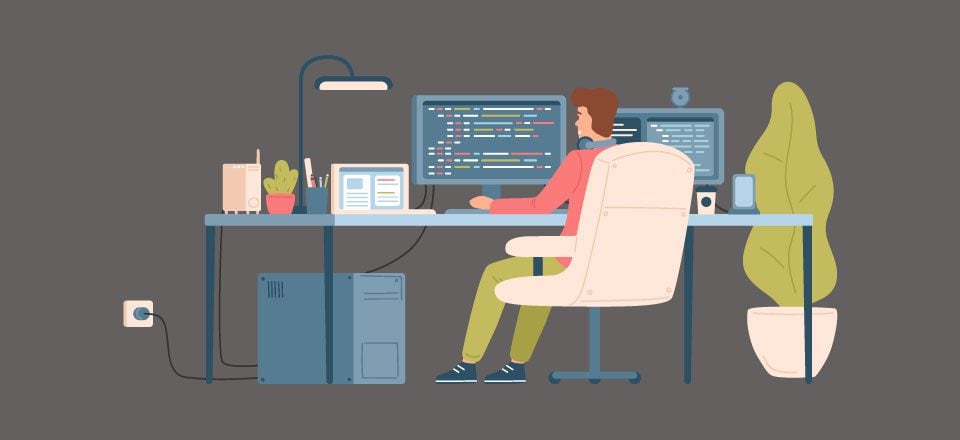Sitting in discomfort is the greatest motivator to push forward. Feeling uneasy helps you grow professionally and it’s the catalyst to take your business further.
- Losing sleep over money can force you to raise your rates or nix clients who waste your time.
- Having to face the music every time you miss a deadline can push you to wake up earlier to get ahead, no matter how much you hate your alarm clock.
- Constantly being worried about what a client, co-worker or manager thinks or how they treat you can drive you to assert yourself and make your boundaries clear.
What upsets us and drains our energy – anger, anxiety, worry – also spurs action. “I don’t want to live like this anymore” is a powerful declaration.
The Fear of Discomfort
Think about the problems in your life. Are you anxious or stressed on a regular basis because you’re miserable at work? Do you feel sick from unhealthy foods or hate what you see in the mirror? At the end of the week, is your energy depleted because you’ve spent too much time making other people happy?
In all of these situations, you’re avoiding discomfort. Having a discussion with your boss, changing careers or raising your rates means upheaval will follow. Adapting your shopping list to only include healthy foods, then learning to prepare those foods and training yourself to like them feels like a job. Saying “no” to people you love makes you feel guilty.
Here’s the thing, though: right now, you’re already uncomfortable. You’re just less uncomfortable with what you’ve been living with than you will be if you make changes. All you’re doing is choosing between two levels of discomfort. The level you’re choosing is in the basement and there’s not an elevator up. At least the other level gets some sunlight.
What you should fear is growing more used to the discomfort you’ve been sitting in for months.
Discomfort Has a Point
Discomfort can be the intuition that tells you, “Do not walk down that dark alley at night.” Listen to that kind of discomfort. It may also say:
- Don’t work with that client. There have been too many red flags and neither of you will be happy.
- These new responsibilities feel like you’re being taken advantage of. Don’t agree to them.
- That seminar you’re being pressured to attend is too expensive and not aligned with your goals.
On the other hand, discomfort can tell you that un-scary things are scary. Either way, discomfort is always telling you something. Your job is to figure out what that something is and why the fear is popping up at the moment.
How to Handle Discomfort
Ask yourself, “What am I afraid of?”
What is it that’s actually threatening you? If there’s nothing, the discomfort may dissipate in a flash.
Maybe there is something scary, though. Change is perfectly scary. Discovering what feels threatening guides you to your next step: doing the research and making a plan to get over it.
Here’s an example: I’m a hiker, but I’m terrified of running into a bear. The discomfort of not hiking is greater than the fear of the bear I may or may not see. I regularly go over what to do if I see a bear, I carry a bear bell and I keep up on bear sightings in the area. The threat’s still there, but my discomfort is lessened, and I’m a better, more prepared hiker for it.
Look that discomfort square in the face and say, “So what?”
You’re uncomfortable. You feel awkward. You’re nervous about an incoming email. You might fail. So what? Is this something you can’t get through? In your life, you’ve learned how to do a million things you’d never done before. You got behind the wheel of a car and powered its entire 4,000 pounds. You’ve broken hearts and had your heart broken. You walked into class on every single first day of school, including middle school which itself is pretty much a lesson in dealing with discomfort for a full three years.
Only focus on the challenge that’s in front of you.
Your mind is going to come up with new ways to prevent you from doing what you’re trying to do. Every time it does, you’ll have to find another workaround. You don’t know what your mind is going to do the next time or the time after that, so don’t run down your energy trying to solve problems that don’t exist yet. Just take one crisis at a time.
Remember that you’re always saying “yes” to something.
When you’re making big, massive changes (or even small, teensy changes), it can feel like you’re telling yourself “no” a lot. “No, you can’t do what you’ve always done. You cannot wrap that proverbial warm blanket around you.” You’re also saying “yes” to something, though. Think of what you’re welcoming instead of what you’re leaving behind.
4 Ways to Increase Your Discomfort to Benefit Your Work
Now things are gonna get fun. We’re going to purposely increase your discomfort in order to push your way out of this “meh” work situation.
Burn your ships.
It’s difficult to choose the uncomfortable-but-better path when the other path, the one you’re used to, is still right there. That’s why you have to “burn your ships,” a method that refers to removing the former option so that you only have the new option left. The phrase refers to an expedition in 1519 when Hernán Cortés led 600 Spaniards to capture a treasure. When they arrived in Mexico, Cortés destroyed his ships to drive the message home: this is it, complete the task or die.
In business, you can create your own point of no return, and it can be as tame or drastic as you want. Send an email that tells your clients you’re no longer offering a specific service. Walk into your boss’ office and give your two week’s notice. Create a situation where you cannot go back; you’ll be forced to move forward, like it or not.
Put yourself through exposure therapy.
If you’re afraid of something, steep yourself in it. Worried about an editor’s response to something you wrote? Ask them flat out whether or not they liked it and if they have any feedback. Avoiding a phone call from an unhappy client? Pick up the phone and call them yourself. Dreading a string of nasty Tweets after posting a controversial comment? Read every single one right this second. Broach the topic you don’t want to discuss, take the next step that has you shaking – just do it so that you can see that it’s not that scary. I’ll ruin the surprise for you: you’ll be fine. (Also, check out this wild experiment called 100 Days of Rejection Therapy).
Eat the frog.
Mark Twain said, “Eat a live frog first thing in the morning and nothing worse will happen to you the rest of the day.” Aside from a great productivity hack, eating the frog is an actionable form of exposure therapy. You can continue worrying about the project you have to start, the looming deadline or the poor critique you have to give your team, or you can just get it over with. Do it first thing, before you do anything else. You may also find that the worry itself is what’s so uncomfortable, not the steps you have to take.
Create a new aversion.
You’re not happy with your job, so you quit. After trying to freelance, you realize that being self-employed is much harder than you thought. You were uncomfortable before, and now you’re still uncomfortable, just in a brand new way.
At the moment, you have an aversion to what’s least familiar. You may be pulling away from a new path because you’re not conditioned to it yet. Think about the discomfort on the other side, though. What did you leave behind? What did it feel like when you were at your old job? What would it be like to go back?
I did this a lot during my first few years of freelancing. I’d close my eyes and walk through a day at my old job. No matter how tough freelancing could be, I stayed so turned off to my ex-job that I would do anything it took to make this work. I replaced one aversion with another, opting for the one that pushed me forward instead of held me back.
Final Thoughts
Progress is a funny thing. You work for it and dream of it and put yourself through an array of uncomfortable moments to get there, and then you look back and some of those big, huge mountains seem so small now. The culmination of your efforts is impressive and you needed those smaller challenges to build up to a big payoff, but that doesn’t change the fact that they were small in the grand scheme of things. The discomfort you feel regarding the changes that seem insurmountable are going to feel like a whole lot of nothing at some point in the future. Face it head on so that you can barrel through it, smash your goals and set new ones.
Are you uncomfortable because you’re constantly comparing yourself with others? Here’s how to stop that right now.









I personally believe sitting in discomfort hampers your creativity, which is the biggest driver in moving forward and building a competitive advantage. A person should always try to look for solutions when faced with such situations because the longer you drag the issues and discomfort that much harm and burden it becomes. Many people have personalities where they keep on dragging their problems considering they will get solved on their own.
Very true, Rachel! Everyone has different motivators.
Not sure this is a good forum for this type of content. Certainly, there are never many replies. Just being true and valuable is not always a reason to present the material. If I am interested in baseball statistics, I don’t really want to read about how some cyclist psyches him/herself up to sprint up hill for 10 miles.
Just saying.
Thanks for your feedback, Randy. Some of these articles do quite well 🙂 We totally understand if it’s not your thing, though.
Not sure this is a good forum for this type of content. Certainly, there are never many replies. Just being true and valuable is not always a reason to present the material. If I am interested in baseball statistics, I don’t really want to read about how some cyclist psyches him/herself up to sprint up hill for 10 miles.
Just saying.